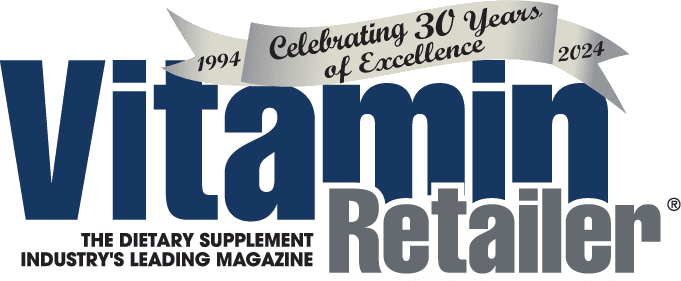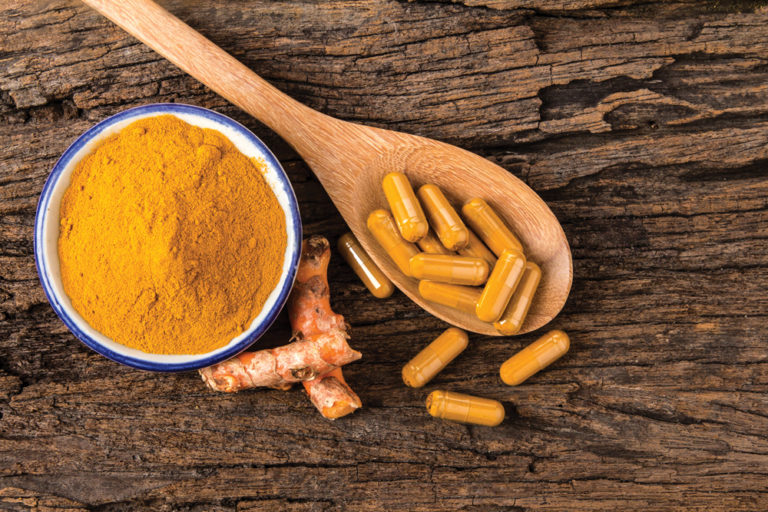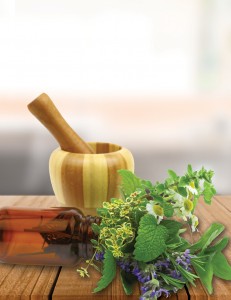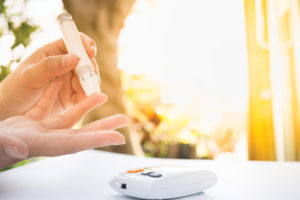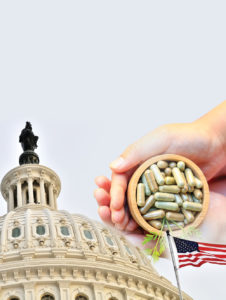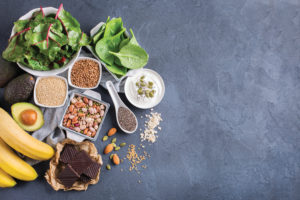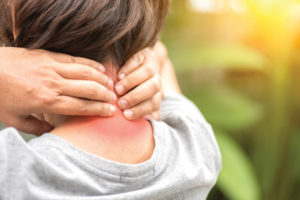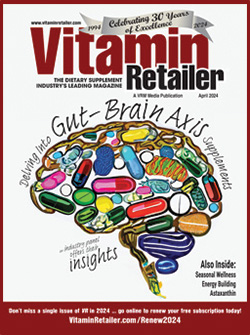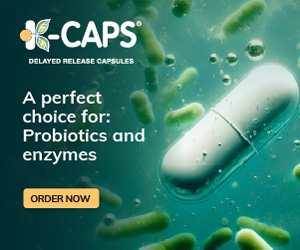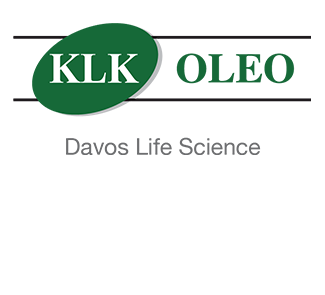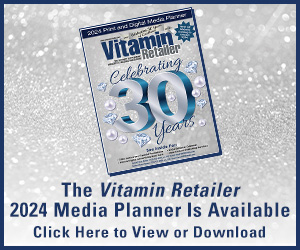Turmeric, and more specifically its primary active constituent known as curcumin, has been used extensively in ancient and modern times for its medicinal qualities.1,2 It was used as a traditional remedy in Chinese and Indian ayurvedic medicine for more than 2,000 years,3 and the authors of a textbook on bioactive foods indicate that “the use of turmeric in Indian folk medicine is one of a veritable panacea, apparently efficacious for conditions that we would nowadays classify in the realm of infectious, inflammatory, metabolic and immunological diseases.”4 Furthermore, research on the modern, evidence-based uses of curcumin is extensive, and includes studies demonstrating a wide spectrum of biological actions. These include anti-inflammatory, antioxidant, anti-carcinogenic, anti-mutagenic, anticoagulant, anti-fertility, anti-diabetic, antibacterial, antifungal, antiprotozoal, antiviral, anti-fibrotic, anti-venom, antiulcer, hypotensive and cholesterol-lowering activities.5 The focus of this article is on curcumin’s benefits for cardiovascular health—and specifically for endothelial dysfunction.
Endothelial Dysfunction
The endothelium is the tissue that lines the interior surface of blood vessels (and lymphatic vessels). Normal functions of the endothelium include mediation of coagulation, platelet adhesion, immune function and control of volume and electrolyte content of the intravascular and extravascular spaces. In vascular diseases, endothelial dysfunction is a disorder broadly defined as an imbalance between vasodilating and vasoconstricting substances produced by (or acting on) the endothelium.6 Endothelial dysfunction can result from and/or contribute to several disease processes, including hypertension (high blood pressure), hypercholesterolaemia, diabetes, septic shock and Behcet’s disease (a rare autoimmune disorder causing blood vessel inflammation).7
Maintaining healthy endothelial function is of vital importance for supporting cardiovascular health, so measuring endothelial function is a good reflection of cardiovascular health. When blood flow increases through a vessel, the vessel dilates. This phenomenon is referred to as flow-mediated dilatation (FMD). FMD is a sensitive measure of endothelial function and serves as a predictive marker of cardiovascular risk. Therefore, improvements in endothelial function, as measured by FMD, are indicative of a reduced cardiovascular risk.8 Supple-mentation with curcumin is one way to help promote healthy endothelial function via FMD.
Preliminary Research With Curcumin
Excess fructose consumption is a risk factor for metabolic syndrome, causing hyperuricemia (excess of uric acid) and endothelial dysfunction in the kidneys. In a study with fructose-fed rats, curcumin lowered uric acid levels, and appeared to ameliorate endothelial dysfunction in the kidneys.9
Likewise, in a randomized, controlled crossover study,10 14 healthy male subjects were given a single serving of curry meal (a natural source of curcumin) or spice-free control meal, to determine if it would improve endothelial function. Before and one hour after consumption, fasting and postprandial FMD responses were measured. According to the results, curry meal increased FMD from 5.2 ± 2.5 percent to 6.6 ± 2.0 percent (P = 0.001), whereas the control meal decreased FMD from 5.8 ± 2.4 percent to 5.1 ± 2.3 percent (P = 0.039). The postprandial FMD after the curry meal was significantly higher than after the control meal (P = 0.002). The researchers concluded that, “consumption of curry ameliorates postprandial endothelial function in healthy male subjects and may be beneficial for improving cardiovascular health.”
Of course, a study in rats, and a study on a single serving of curry is not enough to definitively demonstrate that curcumin is effective for improving endothelial function. However, a well-designed and executed human study on curcumin has shown just that.
Curcumin Bioavailability
Before proceeding to a discussion of the human study on curcumin and endothelial function, it is important and relevant to first address the fact that curcumin has relatively poor biovailability—with 40 to 75 percent of curcumin passing through the digestive tract unchanged in animal research.11 Also, blood concentrations of curcumin are low and tissue distribution is limited following oral dosing due to its fast metabolic turnover in the liver and intestinal wall.12-20 Even upon intake of doses as high as 10 or 12 g curcumin, maximum plasma curcumin concentrations in humans, remain in the low nanomolar range (<160 nmol/L).21
There are, however, a few different commercial curcumin extracts that are supported by research showing better bioavailability vs. regular curcumin. One such extract, whose effects on endothelial dysfunction will be discussed below, is CurcuWIN, a novel curcumin formulation from OmniActive Health Technologies containing 20 percent curcuminoids. A recent human study22 showed that the absorption of total curcuminoids in the blood of this water-dispersible form of curcumin was 45.9-fold higher than normal curcumin.
Curcumin’s Effect on Endothelial Dysfunction
A double-blind, randomized, placebo controlled parallel study23 was conducted to examine the effect of differing doses of curcumin on FMD, and consequently on endothelial dysfunction. Researchers from Texas Christian University (USA), Massey University (New Zealand), and Increnovo, LLC (USA) recruited 59 moderately trained men and women to participate.
Subjects were assigned to placebo, 50 mg, or 200 mg curcumin (from 250 and 1,000 mg CurcuWIN, respectively), for eight weeks. The results of this study were originally presented at the Experimental Biology 2016 Meeting in San Diego, and subsequently published in the Journal of Nutrition and Metabolism.
Results showed that 200 mg of curcumin produced a dose-mediated improvement in endothelial function as measured by FMD. The outcome was a clinically significant 3.0 percent increase, relative to placebo (p=0.020). Those in the placebo group had a decrease in FMD. Consequently, the improvement in FMD with the 200 mg dose of curcumin represented a 37 percent increase over placebo.
The researchers concluded that eight weeks of 200 mg oral curcumin supplementation resulted in a clinically significant improvement in endothelial function as measured by FMD in apparently healthy adults. Not only does this suggest that oral curcumin supplementation may present a simple lifestyle strategy for decreasing the risk of cardiovascular diseases, but other research suggests that for every 1 percent increase in FMD, there is a 9 to 17 percent decrease in cardiovascular disease.24 Therefore, daily supplementation with 1,000 mg CurcuWIN (providing 200 mg of curcumin) had a clinically meaningful impact on potentially reducing cardiovascular risk by 15 to 50 percent in healthy individuals.
Conclusion
Curcumin has been used extensively in ancient and modern times for its medicinal qualities, with research demonstrating a wide range of biological effects. A particular benefit of curcumin supplementation is protection against, and improvement of endothelial dysfunction through an increase in FMD. CurcuWIN, which has been shown to have 45.9-fold higher bioavailability vs. standard curcumin, has also demonstrated a significant increase in FMD vs. placebo in clinical study. This increase in FMD could potentially reduce cardiovascular risk by 15 to 50 percent in healthy individuals. VR
References:
1 Chattopadhyay I, Biswas K, Bandyopadhyay U, Banerjee RK. Turmeric and curcumin: Biological actions and medicinal applications. Current Science. 2004;87(1):44-53.
2 Curcuma longa (turmeric). Monograph. Altern Med Rev 2001;6 Suppl:S62-6.
3 Curcuma longa (turmeric). Monograph. Altern Med Rev 2001;6 Suppl:S62-6.
4 Togni S, Appendino G. Curcumin and Joint Health: From Traditional Knowledge to Clinical Validation. In: Watson RR, Preedy VR (eds.) Bioactive Food as Dietary Interventions for Arthritis and Related Inflammatory Diseases. San Diego: Academic Press; 2013:67-81.
5 Chattopadhyay I, Biswas K, Bandyopadhyay U, Banerjee RK. Turmeric and curcumin: Biological actions and medicinal applications. Curr Sci. 2004;28(1):44-53.
6 Deanfield J, Donald A, Ferri C, Giannattasio C, Halcox J, Halligan S, Lerman A, Mancia G, Oliver JJ, Pessina AC, Rizzoni D, Rossi GP, Salvetti A, Schiffrin EL, Taddei S, Webb DJ; Donald; Ferri; Giannattasio; Halcox; Halligan; Lerman; Mancia; Oliver; Pessina; Rizzoni; Rossi; Salvetti; Schiffrin; Taddei; Webb; Working Group on Endothelin Endothelial Factors of the European Society of Hypertension. Endothelial function and dysfunction. Part I: Methodological issues for assessment in the different vascular beds: a statement by the Working Group on Endothelin and Endothelial Factors of the European Society of Hypertension. J Hypertens. 2005;23 (1): 7–17.
7 Münzel T, Sinning C, Post F, Warnholtz A, Schulz E; Sinning; Post; Warnholtz; Schulz. “Pathophysiology, diagnosis and prognostic implications of endothelial dysfunction”. Ann Med. 2008;40:180–196.
8 Kelm M. Flow-mediated dilatation in human circulation: diagnostic and therapeutic aspects. Am J Physiol Heart Circ Physiol. 2002 Jan;282(1):H1-5.
9 Zhang DM, Li YC, Xu D, Ding XQ, Kong LD. Protection of curcumin against fructose-induced hyperuricaemia and renal endothelial dysfunction involves NO-mediated JAK-STAT signalling in rats. Food Chem. 2012 Oct 15;134(4):2184-93.
10 Nakayama H, Tsuge N, Sawada H, Masamura N, Yamada S, Satomi S, Higashi Y. A single consumption of curry improved postprandial endothelial function in healthy male subjects: a randomized, controlled crossover trial. Nutr J. 2014 Jun 28;13:67.
11 Luper S. A review of plants used in the treatment of liver disease: part two. Altern Med Rev. 1999;4:178-188.
12 Shoba G, Joy D, Joseph T, Majeed M, et al. Influence of piperine on the pharmacokinetics of curcumin in animals and human volunteers. Planta Med. 1998;64:353–356.
13 Sharma RA, McLelland HR, Hill KA, Ireson CR, et al., Pharmacodynamic and pharmacokinetic study of oral Curcuma extract in patients with colorectal cancer. Clin. Cancer Res. 2001;7:1894–1900.
14 Vareed SK, Kakarala M, Ruffin MT, Crowell JA, et al. Pharmacokinetics of curcumin conjugate metabolites in healthy human subjects. Cancer Epidemiol. Biomarkers Prev. 2008;17:1411–1417.
15 Cheng AL, Hsu CH, Lin JK, Hsu MM, et al. Phase I clinical trial of curcumin, a chemopreventive agent, in patients with high-risk or pre-malignant lesions. Anticancer Res. 2001;21:2895–2900.
16 Lao CD, Ruffin MT, Normolle D, Heath DD, et al. Dose escalation of a curcuminoid formulation. BMC Complement. Alter. Med. 2006;6:10.
17 Garcea G, Berry DP, Jones DJ, Singh R, et al. Consumption of the putative chemopreventive agent curcumin by cancer patients: assessment of curcumin levels in the colorectum and their pharmacodynamic consequences. Cancer Epidemiol. Biomarkers Prev. 2005;14:120–125.
18 Sharma RA, Euden SA, Platton SL, Cooke DN, et al. Phase I clinical trial of oral curcumin: biomarkers of systemic activity and compliance. Clin Cancer Res. 2004;10:6847–6854.
19 Carroll RE, Benya RV, Turgeon DK, Vareed S, et al. Phase IIa clinical trial of curcumin for the prevention of colorectal neoplasia. Cancer Prev. Res. (Phila) 2011;4:354–364.
20 Ringman JM, Frautschy S A, Teng E, Begum AN, et al. Oral curcumin for Alzheimer’s disease: tolerability and efficacy in a 24-week randomized, double blind, placebo-controlled study. Alzheimers Res. Ther. 2012;4:43.
21 Vareed SK, Kakarala M, Ruffin MT, Crowell JA, et al. Pharmacokinetics of curcumin conjugate metabolites in healthy human subjects. Cancer Epidemiol. Biomarkers Prev. 2008;17:1411–1417.
22 Jäger R, Lowery RP, Calvanese AV, Joy JM, Purpura M, Wilson JM. Comparative absorption of curcumin formulations. Nutr J. 2014 Jan 24;13:11.
23 Oliver JM, Stoner L, Rowlands DS, Caldwell AR, Sanders E, Kreutzer A, Mitchell JB, Purpura M, Jäger R. Novel Form of Curcumin Improves Endothelial Function in Young, Healthy Individuals: A Double-Blind Placebo Controlled Study. J Nutr Metab. 2016;2016:1089653.
24 Green DJ, Jones H, Thijssen D, Cable NT, Atkinson G. Flow-mediated dilation and cardiovascular event prediction: does nitric oxide matter? Hypertension. 2011 Mar;57(3):363-9.
Bio-box:
Gene Bruno, MS, MHS, the dean of academics for Huntington College of Health Sciences, is a nutritionist, herbalist, writer and educator. For more than 30 years he has educated and trained natural product retailers and health care professionals, has researched and formulated natural products for dozens of dietary supplement companies, and has written articles on nutrition, herbal medicine, nutraceuticals and integrative health issues for trade, consumer magazines and peer-reviewed publications. He can be reached at gbruno@hchs.edu.
